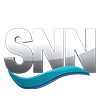SERVPRO of Palo Alto provides water and fire damage restoration services to homeowners and businesses in the Bay area. The team of professionals at SERVPRO is very involved in helping foster a culture of fire safety in the home and the workplace. Fire safety involves several crucial components:
- Fire safety readiness
- Fire prevention strategies
- Fire response alertness
- Fire damage recovery
.png)
Fire prevention is the first line of defense against a fire damage disaster. A proper response to a fire or smoke alarm alert is the best way to survive an actual fire in the home or workplace.
When the smoke alarm alerts the occupants of a home or business, they must know how to conduct themselves and be able to respond according to the training they have received. An emergency plan can be in place and fire prevention strategies up to date, but if the occupants of the home or business fail to appropriately respond to a smoke alarm, property damage, personal injury, or even loss of life could occur.
Some potentially life-saving tips for responding to a fire alarm alert.
Tip #1: Always assume the smoke alarm is real and not a false alarm.
Smoke alarms very rarely self-activate without being triggered by smoke, but that smoke may not always be from a life-threatening fire. The cause of the smoke could be a dish cooking on the stove, in which case the homeowner just needs to turn on the exhaust fan over the stove or open a door or window to let in the fresh air. Once the source of the smoke has been identified and adequately resolved, life can return to normal. Everyone can sit down at the table to enjoy a delicious meal. However, the smoke is real, and the alarm response is accurate. Even in the case of a smoking dish that is not on fire, a cooking fire could still result if the problem is not resolved.
If a fire alarm system activates in the workplace, policy dictates the response. Employees have protocols they must follow, whether the alarm is a drill, an actual fire, a prank, or a false alarm. Often included in these procedures are stringent time goals that must be met. These time markers ensure evacuation will be achieved within a safe time frame. In some work environments, a fire can spread across dust-laden rafters in seconds, and safe escape may be measured in seconds rather than minutes.
Tip #2: Remain calm, alert, and ready to act.
Stay calm, and do not panic. Remember the drills. Stay focused on the necessary and immediate tasks that must be accomplished before evacuation. If the smoke alarm activates in the middle of the night, safe and immediate evacuation is the top priority. Get children and pets out of the home safely while alerting first responders to a possible emergency. If the smoke alarm goes off during the day in response to a known fire from an appliance, electrical short, or a cooking fire, take immediate steps to extinguish the blaze. Extinguishing a fire is easiest and most successful when only smoke or minimal flames are involved.
When evacuating the workplace, take the time to gather personal keys, business keys, a purse or backpack, and the cell phone if the activity can be completed in seconds. Desk knick-knacks, photos, or other mementos can be left behind. Most commercial buildings are outfitted with a sprinkler system that will minimize fire damage. Occupants in a multi-story complex should immediately take the designated evacuation route. Elevators may become non-operational during a fire.
Tip #3: Follow the smoke alarm response procedures.
In the case of a fire in a house or apartment, exit the structure quickly. A fire may ignite volatile substances that could explode or produce toxic fumes, so keep a safe distance. Check to make sure everyone, including pets, has been evacuated. Wait for emergency responders to arrive. Under no circumstances is anyone to re-enter the burning or smoke-filled home or apartment complex.
In the workplace, be familiar with and follow the smoke alarm response outlined in the Emergency Response Plan. Evacuation is only one part of the escape and survival portion of the plan. Some plans involve groups, crews, or teams meeting outside the facility and completing a digital or paper attendance registry to ensure everyone has exited the building. Employees are usually required to remain a safe distance from the facility. Under no circumstances are employees to re-enter a burning, smoke-filled building. Take time to notice how co-workers are doing in the stress of the moment and offer mental support and encouragement where needed.
Tip #4: Do not interfere with first responders when they arrive on the scene.
Do not hinder the efforts of or attempt to assist firefighters or other first responders. Carefully follow any instructions given by the fire crew.
.png)
When property damage affects residential or commercial buildings, SERVPRO of Palo Alto is available to respond 24-hours a day, 365 days a year. The team helps regain control of the situation quickly and begins the restoration process promptly. For more information about Sunnyvale, CA, fire and water damage restoration, call SERVPRO of Palo Alto at (650) 800-3448. The office can also be reached by emailing office@servpropaloalto.com.





















